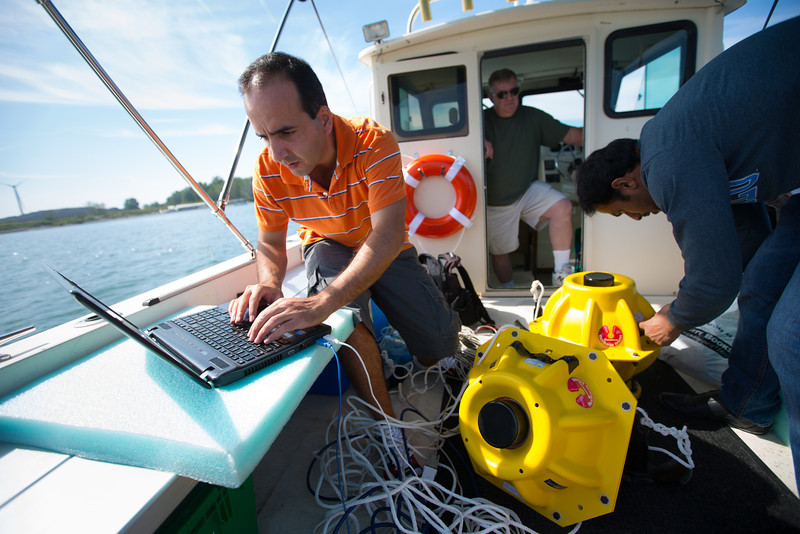New Wave Wi-Fi: Wireless Underwater Internet in the Works

There's Wi-Fi on the International Space Station, so why not at the bottom of the ocean? The problem: Radio waves, which carry wireless signals, are sluggish in water.
Now researchers from the University at Buffalo have a solution, and it's about to make the ocean a noisy place. Their wireless Internet prototype relies on sound waves.
The bulky underwater modems emit high-pitched chirps that can travel as far as about 0.6 miles (1 kilometer). The University at Buffalo team recently tested the system in Lake Erie, dropping two 40-pound (18 kilograms) sensors into the water and listening for chirps. The modems are as slow as dial-up phone systems from 30 years ago. However, the researchers hope one day a speedier wireless network could improve tsunami warning systems or help monitor oceans and climate.
The U.S. tsunami warning system currently relies on ocean-bottom sensors that send acoustic signals to surface buoys. The buoys transmit radio signals to a satellite, which alerts computers on land.
A seafloor wireless network could eliminate some of these communication steps, the researchers claim.
"A submerged wireless network will give us an unprecedented ability to collect and analyze data from our oceans in real-time," Tommaso Melodia, an electrical engineer at the University at Buffalo, said in a statement.
The team will present their latest results at the International Conference on Underwater Networks and Systems in Taiwan in November.
Sign up for the Live Science daily newsletter now
Get the world’s most fascinating discoveries delivered straight to your inbox.
Email Becky Oskin or follow her @beckyoskin. Follow us @livescience, Facebook & Google+. Original article on LiveScience.











